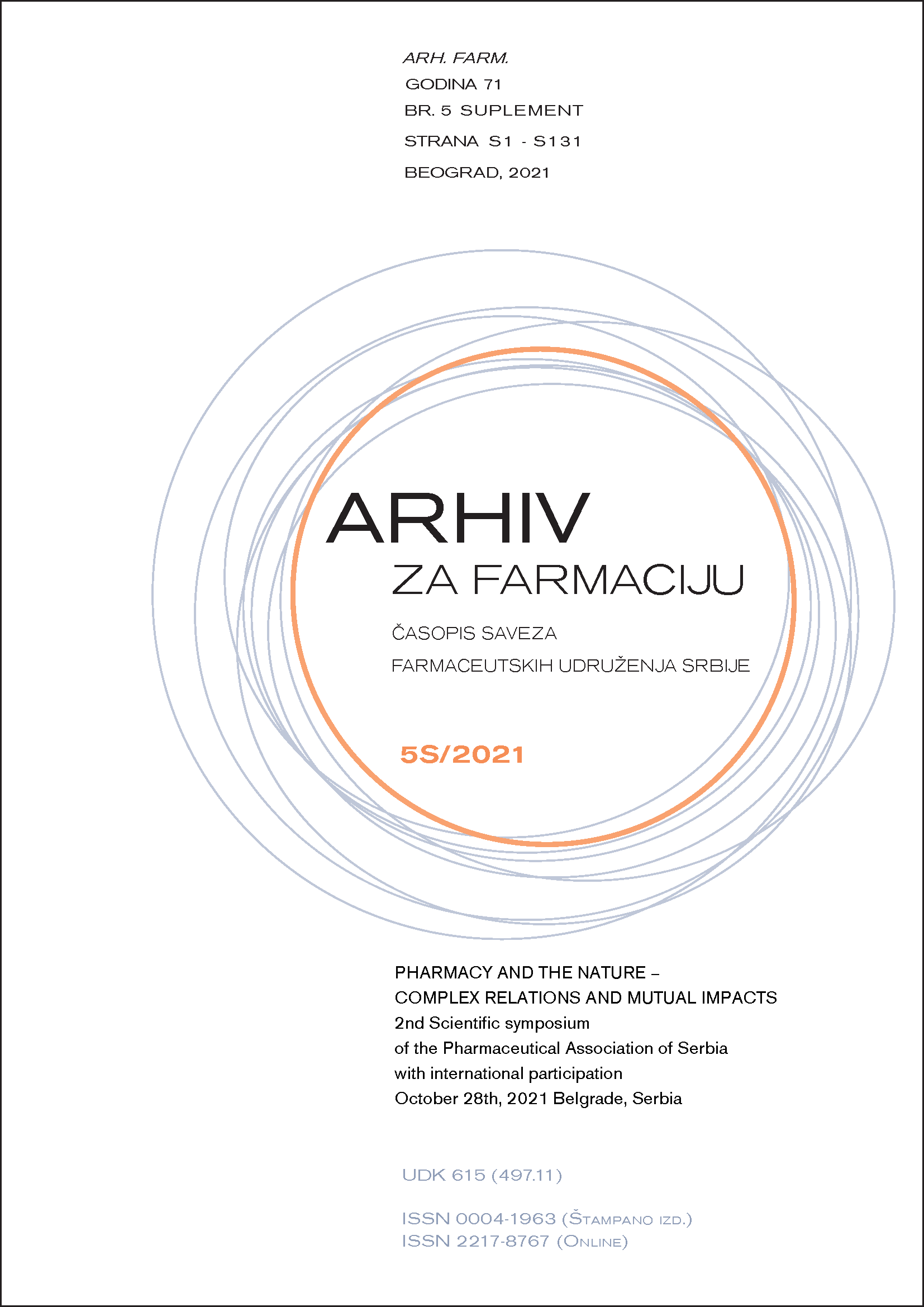DAILY INTAKE OF ANTHOCYANINS AND POLYPHENOLS PROVIDED BY THE CONSUMPTION OF BILBERRY-BASED JUICES
Abstract
Health benefits from bilberry consumption are mostly associated with presence of phenolic compounds, especially anthocyanins, which have antioxidant, anti-inflammatory and cardioprotective properties. As a result of many suggested health-promoting effects, fresh raw and commercially available bilberry juices are nowadays becoming a part of a healthy lifestyle. Therefore, the aim of this study was to examine anthocyanin and polyphenol composition of eight commercially available bilberry-based juices and to estimate daily intake of anthocyanins and polyphenols provided by the consumption of these juices. Six 100% bilberry juices, one 55% bilberry juice (with 35.1% of Melissa officinalis extract and 9.9% agave syrup) and one sample with 35% of bilberry pulp and 65% of apple juice were obtained from the market and subjected to analyses. The HPLC-UV method was employed in the quantification of phenolic compounds and anthocyanins. The daily intake of anthocyanins and polyphenols provided through consumption of target amount of bilberry-based juice (0.2 L/day; USDA recommendations) was calculated. Fifteen individual anthocyanins were determined. Glucosides and galactosides of malvidin and delphinidin as well as cyanidin-glucoside were predominant in the samples, with the concentrations up to 53 mg/L. A total of ten phenolic compounds, including phenolic acids, flavan-3-ol, flavonols, flavanon and stilbene, were detected in the analyzed bilberry juices. Phenolic acids accounted for more than 90% of total content of individual phenolics, with the chlorogenic acid being the most abundant in all samples, in the range from 49 mg/L to 487 mg/L. The concentration of flavan-3-ol catechin ranged between 0.7 mg/L and 6 mg/L while the content of predominant flavonol quercetin ranged between 0.8 mg/L and 12 mg/L in the samples. 100% bilberry juices are generally the most abundant in anthocyanins and polyphenols while the sample with only 35% bilberry contained the lowest concentration of the analyzed components. When the target daily juice intake is reached, bilberry juices investigated in our study provide the anthocyanin intake in the range from 0.3 mg/day to 63.5 mg/day, as well as the phenolics intake in the range from 13 mg/day to 106 mg/day. This study showed that commercially available bilberry-based juices can be important sources of various phenolic compounds and anthocyanins in a human diet. Moreover, the results indicate that juice selection greatly affects the intake of specific antioxidant compounds.

